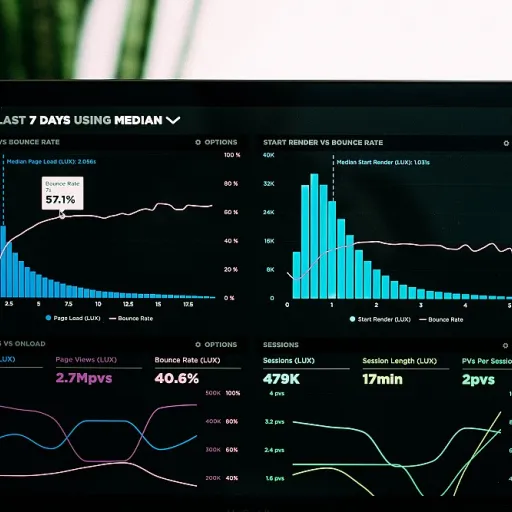
Understanding why website flippers migrate from magento to shopify
Why website flippers choose Shopify over Magento
Website flippers are always on the lookout for platforms that make their investment more attractive to buyers. Magento is known for its flexibility and power, but it often requires technical expertise and ongoing maintenance. Shopify, on the other hand, offers a more streamlined, user-friendly experience, making it a popular choice for those aiming to maximize resale value.
- Ease of use: Shopify’s intuitive interface allows even non-technical users to manage products, collections, and customers with minimal training.
- Lower maintenance: Unlike Magento, Shopify handles hosting, security, and updates, reducing the workload for future owners.
- App ecosystem: Shopify’s robust app store provides additional options for integration, automation, and marketing, which can boost a store’s appeal.
- Support and scalability: Shopify offers 24/7 support and can scale with growing traffic, making it a safer bet for buyers who want a reliable online store.
Market trends and buyer expectations
Many buyers now expect a seamless experience when acquiring an online store. Shopify’s automated migration tools and third-party migration services make the process of moving data, products, and customers from Magento to Shopify more efficient. This means less downtime and fewer headaches during the transition. The ability to easily import products and customer data via CSV files or apps is a major selling point.
Additionally, Shopify’s integration with popular payment gateways and marketing tools helps flippers position their stores for rapid growth post-migration. The migration process itself can be a value-add, as buyers are willing to pay a premium for a store that’s already been moved to a platform with strong support and a proven track record.
For those looking to master the art of website flipping, understanding the benefits of Shopify migration is a crucial step in building a more marketable asset.
Preparing your magento site for migration
Checklist for a Smooth Magento Store Preparation
Before starting the migration process from Magento to Shopify, it’s essential to get your Magento store in order. A well-prepared store ensures a smoother data migration and minimizes the risk of losing valuable products, customers, or store data. Here’s how to get your Magento site ready for a successful Shopify migration:
- Audit Your Data: Review your products, collections, and customers. Remove outdated or duplicate entries. Clean up product fields and ensure all essential information is present for each product and customer.
- Backup Everything: Always create a full backup of your Magento store data. This includes products, customers, orders, and any custom fields. You can use Magento’s built-in tools or a third-party migration service for this step.
- Export Data: Prepare to export your data in a format compatible with Shopify, such as a CSV file. Pay attention to required fields for products, collections, and customers, as Shopify may have different requirements than Magento.
- Review Third-Party Apps and Integrations: List all third-party apps and integrations currently active in your Magento store. Check if similar apps or integration support is available in Shopify, as not all features will migrate automatically.
- Organize Product Images and Files: Make sure all product images and downloadable files are organized and accessible. Shopify migration tools or apps often require direct access to these files for a seamless import.
- Document Customizations: Note any custom code, unique product fields, or special features in your Magento store. This documentation helps during the migration process and when configuring your new Shopify store.
- Test Your Store: Before migration, test your Magento store for broken links, missing images, or incomplete product data. Fixing these issues now will save time and prevent complications during the Shopify migration.
Choosing the Right Migration Approach
There are several ways to migrate Magento to Shopify, each with its own pros and cons. Your choice will depend on your technical skills, budget, and the complexity of your Magento store:
- Manual Migration: Export data from Magento and import it into Shopify using CSV files. This method is free but can be time-consuming, especially for stores with many products or customers.
- Automated Migration Tools: Use dedicated apps or migration services that automate much of the process. These tools can handle products, customers, and even order data, reducing manual effort and errors.
- Third-Party Migration Services: For complex stores or those with custom integrations, hiring a professional migration service ensures a smooth transition and ongoing support.
For more insights on optimizing your preparation and boosting your website’s resale value, check out this guide on mastering the art of website reselling.
Key Data to Prepare for Shopify Migration
| Data Type | Preparation Tips |
|---|---|
| Products & Collections | Ensure accurate titles, descriptions, pricing, and images. Organize collections for easy import. |
| Customers | Verify email addresses and contact details. Remove inactive or duplicate accounts. |
| Orders | Export recent order history if needed. Some automated migration apps support order data transfer. |
| Custom Fields | Document any custom product or customer fields. Plan how to map these to Shopify’s structure or apps. |
| Store Settings | Take note of tax, shipping, and payment settings for reference during Shopify setup. |
By investing time in these preparation steps, you’ll set the stage for a more efficient migration process and a stronger Shopify store ready for resale.
Key steps in the magento to shopify migration process
Mapping and Exporting Your Magento Data
Start by auditing your Magento store data. Identify all products, customers, orders, and collections you want to migrate. Use Magento’s built-in export tools to generate a CSV file for each data type. Make sure to review the fields in your export files, as Shopify may require different field names or formats. This step is crucial for a smooth data migration process and helps prevent data loss or mismatches.
Choosing the Right Migration Method
There are several ways to migrate Magento data to Shopify. You can use Shopify’s free import app, third-party migration apps, or hire a migration service. Automated migration tools can save time, especially for large stores, but manual CSV import gives you more control over the process. Consider your store size, technical skills, and budget when selecting the best option. Shopify’s integration support can also help streamline the process for website flippers looking to maximize efficiency.
Importing Products, Customers, and Collections
Once you have your data files ready, use Shopify’s import tools or your chosen app to upload products, customers, and collections. Pay close attention to how product fields and collections are mapped—Shopify’s structure may differ from Magento’s. Double-check that all product images, descriptions, and variants are correctly imported. For customers, ensure that email addresses and order histories are preserved where possible. If you encounter issues, Shopify’s support and community forums can be valuable resources.
Testing and Verifying Your Shopify Store
After migration, thoroughly test your new Shopify store. Review product listings, customer accounts, and order data to confirm everything transferred correctly. Test the checkout process, payment integrations, and any third-party apps you plan to use. Address any errors or missing data before making your store live. This careful review helps ensure a seamless experience for future buyers and increases the value of your online store in the flipping market.
Common challenges and how to avoid them
Watch Out for Data Loss and Field Mapping Issues
One of the most common challenges in the migration process from Magento to Shopify is data loss. Website flippers often face problems when product, customer, or order data does not transfer correctly. This can happen if fields in your Magento store do not match those in Shopify. For example, custom product fields or unique customer data might not have a direct equivalent in Shopify, leading to missing information after migration.
- Always review your data fields before starting the migration. Identify any custom attributes in your Magento store that may need special handling.
- Use a CSV file export to examine your products, customers, and collections. This helps you spot any fields that might not migrate automatically.
- Consider using a third-party migration app or migration service that supports field mapping and custom data migration. Many free and paid apps offer additional options for mapping fields between platforms.
Dealing with App and Integration Compatibility
Another challenge is ensuring that your integrations and apps continue to work after the migration. Magento and Shopify have different ecosystems, and not all Magento extensions have direct Shopify equivalents. This can affect automated migration processes, especially if your Magento store relies on specific third-party integrations for payments, shipping, or marketing.
- List all the apps and integrations currently active on your Magento store.
- Research Shopify apps that offer similar functionality. Some features may require a different approach or a combination of multiple Shopify apps.
- Test each integration in a staging environment before going live with your Shopify store.
Managing Product Variants and Collections
Magento and Shopify handle products, variants, and collections differently. During the migration, you might find that some product variants or grouped products do not import as expected. This can impact your store’s organization and the customer experience.
- Check how your products and collections are structured in Magento. Plan how they will appear in Shopify, especially if you have complex product types or many variants.
- Use Shopify’s import tools or a dedicated migration app to manage large product catalogs. Some apps offer automated migration of products, collections, and related data.
- After migration, review your Shopify store to ensure all products and collections display correctly and that no data is missing.
Ensuring SEO and URL Structure Are Preserved
Maintaining your online store’s SEO performance is critical for resale value. Magento and Shopify use different URL structures, and failing to set up proper redirects can result in lost traffic and lower search rankings.
- Document your most important URLs in your Magento store before migration.
- Set up 301 redirects in Shopify to point old Magento URLs to their new Shopify equivalents.
- Monitor your site’s SEO performance after migration and address any issues promptly.
Getting Support When You Need It
Even with careful planning, unexpected issues can arise during the migration process. Both Magento and Shopify offer support resources, but website flippers may benefit from using a migration service or consulting with experts who specialize in Magento Shopify migrations. This can help resolve technical challenges quickly and ensure a smooth transition for your store data.
Optimizing your shopify site post-migration for resale
Fine-tuning Your Shopify Store for Maximum Appeal
After completing the migration from Magento to Shopify, your next step is to optimize the new Shopify store for resale. This phase is crucial for website flippers aiming to maximize value and attract potential buyers. A well-optimized Shopify store not only looks professional but also ensures smooth operations and a seamless customer experience.
Review and Clean Up Imported Data
- Check product data: Review all imported products, collections, and customer information. Ensure that product titles, descriptions, images, and pricing have transferred correctly from Magento. Pay attention to custom fields and attributes, as these may require manual adjustment after migration.
- Test store functionality: Navigate your Shopify store as a customer would. Test product pages, add-to-cart, checkout, and payment processes to confirm that all data and integrations are working as intended.
Enhance Store Design and User Experience
- Choose a modern theme: Shopify offers a range of free and paid themes. Select one that fits your niche and showcases your products effectively. Customize the theme to match your brand and improve navigation.
- Optimize for mobile: Ensure your store is responsive and looks great on all devices. Many buyers prioritize mobile-friendly stores, so this step can increase your store’s resale value.
Integrate Essential Shopify Apps
- Install key apps: Consider adding apps for SEO, email marketing, reviews, and analytics. These tools can automate processes, improve customer retention, and provide valuable insights for future owners.
- Check third-party integrations: If your Magento store used specific integrations, look for Shopify equivalents or migration support options. This ensures continuity in store operations and data management.
Optimize Store Data and Performance
- Clean up your product catalog: Remove duplicate or outdated products and collections. Organize your catalog for easy browsing and searchability.
- Improve site speed: Compress images, limit the number of installed apps, and use Shopify’s built-in performance tools to ensure fast loading times.
Prepare Documentation for Prospective Buyers
- Document the migration process: Keep a record of the steps taken, including data migration methods (CSV file, automated migration, or migration service), apps used, and any manual adjustments made. This transparency builds trust with buyers.
- Highlight additional options: List any extra features or integrations added post-migration, such as enhanced reporting or customer support tools.
By focusing on these areas, you’ll ensure your Shopify store is not only ready for customers but also attractive to potential buyers in the website flipping market. Optimizing your store post-migration can make a significant difference in both perceived value and final sale price.
Maximizing value in your website flip after migration
Boosting Your Shopify Store’s Appeal to Buyers
After completing the migration from Magento to Shopify, your next step is to maximize the value of your online store for potential buyers. A well-optimized Shopify store not only attracts more interest but also commands a higher resale price. Here’s how you can make your store stand out in the website flipping market:
- Ensure Data Integrity: Double-check that all products, customers, and order data have migrated correctly. Use Shopify’s import tools or a third party migration service to verify that your product collections, customer fields, and store data are accurate and complete. Any missing or mismatched data can reduce buyer confidence.
- Leverage Shopify Apps: Integrate popular Shopify apps to enhance store functionality. Automated migration tools can help with ongoing data sync, while marketing and analytics apps add value for future owners. Highlight these integrations in your listing.
- Optimize Store Design and UX: Make sure your Shopify store is visually appealing and easy to navigate. A clean design, fast load times, and mobile responsiveness are key selling points. Consider free or premium themes that showcase your products effectively.
- Document the Migration Process: Prepare a clear record of the migration steps, including how you handled product imports, CSV file transfers, and any additional options or custom fields. This transparency reassures buyers about the quality of the migration process.
- Highlight Integration and Support: If you’ve set up integrations with third party services or automated migration tools, mention these as added benefits. Also, provide details on ongoing support or resources available for the Shopify store.
Showcasing Store Performance and Growth Potential
Buyers want to see not just a functional Shopify store, but one with proven performance and growth potential. Here are some ways to demonstrate value:
- Share Analytics: Provide access to store analytics, showing traffic, conversion rates, and sales trends post-migration. This data helps buyers assess the store’s health and potential.
- Present Clean Financials: Organize your revenue, expenses, and profit data in a clear format. Use Shopify’s built-in reports or export data to a CSV file for easy review.
- Showcase Customer Base: Highlight the quality and engagement of your customers. If you migrated customer data from Magento, demonstrate how you maintained or improved customer retention and satisfaction.
- Offer Transition Support: Make your store more attractive by offering free support or documentation for the new owner. This can include guides on managing products, using apps, or handling future data migrations.
Final Tips for Maximizing Your Website Flip
- Keep your Shopify store updated with the latest features and apps.
- Regularly back up your store data to avoid any loss during the sales process.
- Highlight any unique selling points, such as niche products, exclusive supplier relationships, or automated workflows.
By focusing on these areas, you’ll position your Shopify store as a valuable asset for website flippers and buyers looking for a turnkey online business. A smooth migration process, robust data integration, and clear documentation are key to maximizing your return on investment.













